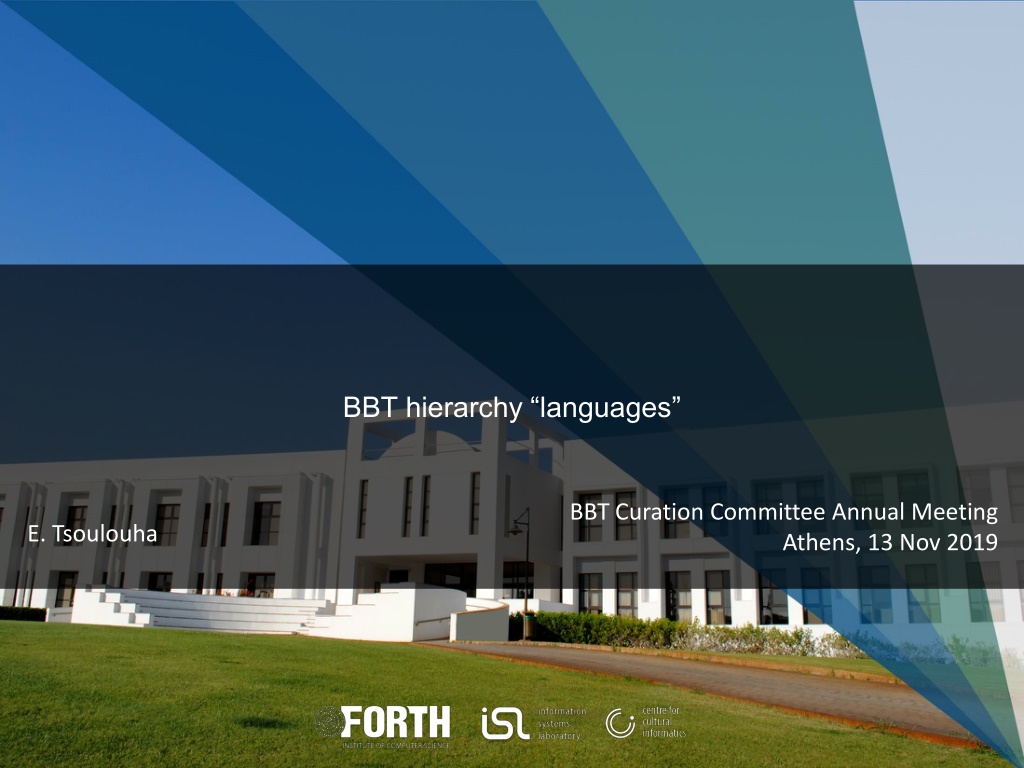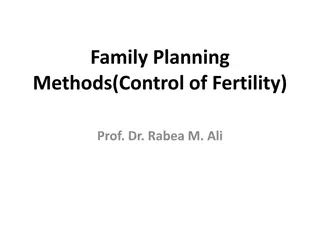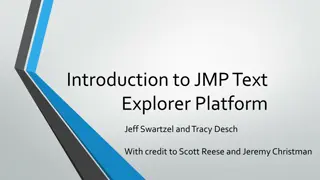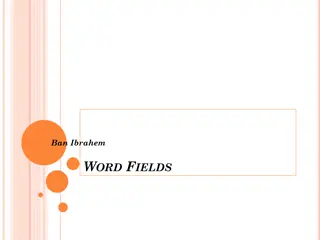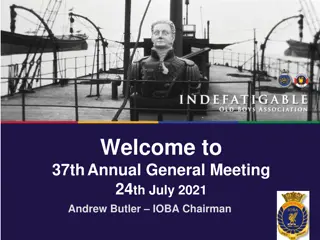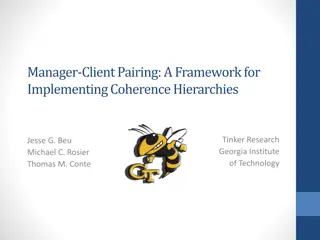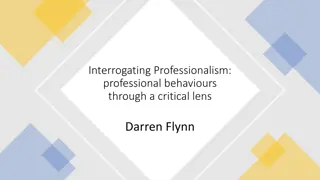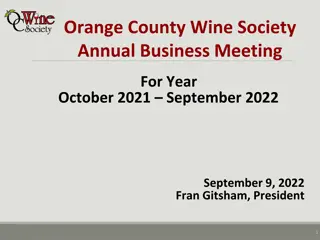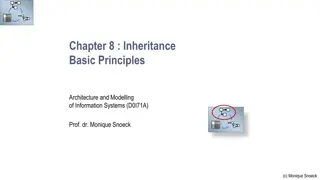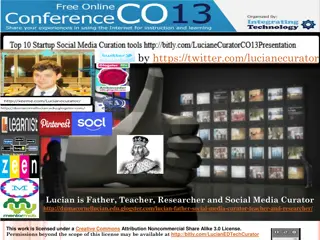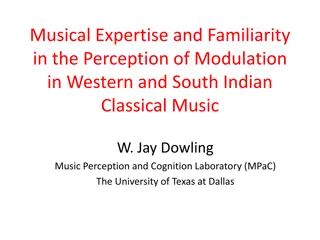Exploration of Language Hierarchies in BBT Curation Committee Annual Meeting
Delve into the categorization of languages within the BBT hierarchy, discussing the distinctions between natural and formal languages, potential restructurings of language classification, and considerations for expressing communicative power through different language forms.
Download Presentation

Please find below an Image/Link to download the presentation.
The content on the website is provided AS IS for your information and personal use only. It may not be sold, licensed, or shared on other websites without obtaining consent from the author. Download presentation by click this link. If you encounter any issues during the download, it is possible that the publisher has removed the file from their server.
E N D
Presentation Transcript
BBT hierarchy languages BBT Curation Committee Annual Meeting Athens, 13 Nov 2019 E. Tsoulouha
Conceptual Objects facet Conceptual Objects (facet) - conceptual objects (top term) - - symbolic objects - - propositional objects - - methods - - concepts - - languages E28 Conceptual Object E90 Symbolic Object E89 Propositional Object E29 Design or Procedure ? corresponds to E56 Language
LANGUAGES [BBT term, isA Conceptual Objects propositional objects AND symbolic objects]: This term classifies types of systems used to communicate concepts, that comprise a finite set of elements and a set of recursive rules to combine them into a potentially infinite array of discrete expressions.
Objections and second thoughts The basic properties captured on the scope note i.e. finite set of elements, finite set of rules to recursively combine them into potentially infinite expressions can adequately describe all systems that count as instances of language, as they form the sine qua non of language. However, it has been stressed out that natural languages and formal languages feel very different to be lumped together in one hierarchy. The limitation of keeping the BBT very small and without an articulate structure having been uplifted, we can consider distinguishing natural and formal languages within the BBT. Either as leaf-nodes of the hierarchy languages or as leaf nodes to the parent term of languages (if we decide that they only share trivial characteristics). We can also consider other possible distinctions within this hierarchy, as well as the place of the hierarchy in the BBT structure.
Relation of Natural Languages to Formal Languages and to Language in general Possibilities to explore: Only define the cover term languages and link other more expanded classifications to the BBT term with the indication Narrower. Get rid of the term languages on the basis that the expressivity and communicative power of natural languages cannot be matched by that of formal languages. Add a third level of terms to BBT at the level of languages corresponding to the division between natural and formal languages.
OptionNo.1 Only define the cover term languages and link other more expanded classifications to the BBT term with the indication Narrower. In line with the AAT that considers all forms of communication with grammatical/syntactic regularity to be specifications of *language*. AAT scope note: Established systems of spoken or written communication, distinct from other such systems and used by a particular nation, culture, people, or community, typically consisting of words used within a regular grammatical and syntactic structure. The concept may include established sign languages as well. For the general concept of verbal or non-verbal communication, use "language (general communication)."
E56 Language Scope note: This class is a specialization of E55 Type and comprises the natural languages in the sense of concepts. OptionNo.2 Get rid of the term languages on the basis that the expressivity and communicative power of natural languages cannot be matched by that of formal languages. This type is used categorically in the model without reference to instances of it, i.e. the Model does not foresee the description of instances of instances of E56 Language, e.g.: instances of Mandarin Chinese . It is recommended that internationally or nationally agreed codes and terminology are used to denote instances of E56 Language, such as those defined in ISO 639:1988. Examples: el [Greek](Palmer, 1980) en [English](Wilson, 1983) eo [Esperanto](Nuessel, 2000) es [Spanish](Pineda, 1993) fr [French](Rickard, 1974) In First Order Logic: E56(x) E55(x) Option No. 2 evokes the definition of E56 Language in the CRM and makes explicit the distinction among natural and formal languages.
Option No.3 Add more levels of terms to BBT at the level of languages corresponding to the division between natural and formal languages. If we decide to expand the structure of BBT, we should do so in a consistent and uniform way. i.e. this decision could have implications for mobile objects and Materials as well (Lena & Camilla s presentation)
1. NATURAL LANGUAGES: This term classifies the kinds of types of systems used to communicate concepts that are particular to humans and (possibly) no other species on the planet. Like all kinds of communication systems that can be referred to as Language , natural language also possesses a finite set of elements (sounds or gestures -in the case of sign languages) and a recursively defined grammar (i.e. set of rules and principles) specifying the properties of its expression. What sets natural language apart from other systems of communication is that it is passively, effortlessly acquired during early age, by mere exposure to linguistic input. At the same time, natural language is a phenomenon deeply entrenched in human culture, that aside communication pure is associated with other functions as well, like establishing relations, building identities (both individual and social), entertainment etc. Examples of Natural Languages are English, Modern Greek, Turkish, Arabic, Chinese and their dialects (especially if the building identities part is to be considered) like BEV/AMEV (Black English/American English Vernacular), Cappadocian Greek (heavily turkicized after the Ottoman conquest in the 11th century) etc. Examples of non-spoken, sign languages are the American Sign Language, the Nicaraguan Sign Language and others.
2. FORMAL LANGUAGES : This term classifies types of languages consisting of recursively defined collection of strings on a fixed alphabet (also referred to as a 'vocabulary'), by means of a number of explicit rules and constraints (also referred to as a 'syntax') that state which expressions (or 'words') combine with one-another into well-formed expressions, observing compositionality. Formal languages are designed by people for a clear, particular purpose. Examples of formal languages are the language of Set theory, the language of FOPL, the language of ordinary arithmetic and others, but also programming languages, for instance Java, and data definition languages, such as XML. NOTE: Constructed languages, with invented phonology, grammar and vocabulary, consciously devised for communication within established groups, are not included in formal languages, as it is always possible that they acquire native speakers (children raised speaking it; f.i. Esperanto, Modern Hebrew, various Pidgin languages) . 2.1. PROGRAMMING LANGUAGE: This term classifies kinds of formal languages comprising sets of instructions used to implement an algorithm or sets of statements that express facts and rules about some problem domain, which produce some valid output when executed on a computer. Examples of programming languages are C, C++, Java, Perl, Python, R, etc.
HOWEVER: the boundaries between what counts as a natural language and what counts as a formal one are very fuzzy to the extent that the sets could almost be co- extensive. What does a natural language amount to? What about: cants constructed languages Jargons pidgin languages
Proposal for BBT languages Make it isA symbolic objects AND propositional objects Either make it a leaf node of BBT do not expand further within the BBT or only expand it to natural and formal languages. No criteria can be used to produce disjoint classifications, except purpose maybe: Communicating with people (no matter how inclusive or exclusive one is trying to be), vs. producing formal definitions and/or bringing about a specific result.
